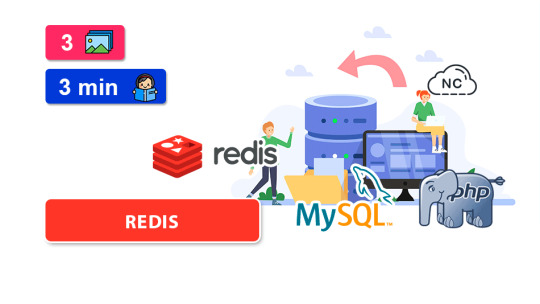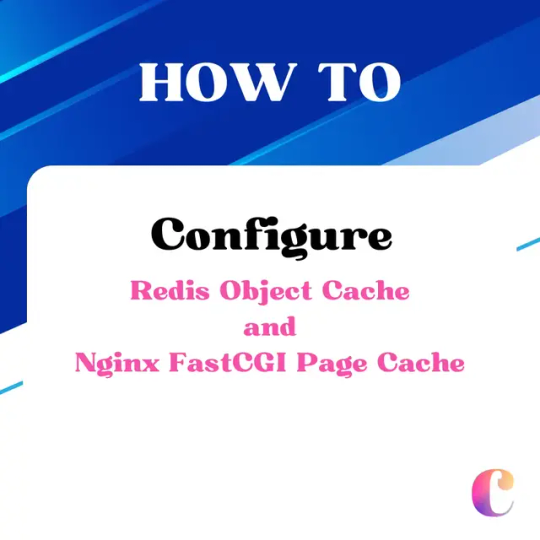#Redis
Explore tagged Tumblr posts
Text
Save people who first came to protect us no matter what




#ukraine#mariupol#azov brigade#free azov#free azovstal defenders#free mariupol defenders#free defenders#free pows#russia is a terrorist state#russo ukrainian war#russian invasion of ukraine#war in ukraine#genocide#stop the genocide#stand with ukraine#arm ukraine#український tumblr#укртумбочка#український тамблер#important#signal boost#world news#world#denys prokopenko#redis#bring them home now#captivity#russian captivity#russia must burn
18 notes
·
View notes
Text










"Heron" hardware MIDI sequencer (work in progress) - 2023 Built with: - Raspberry Pi 4B - 4.3" DSI Touch Display - Midiface 4x4 USB MIDI interface - Custom PCB and various switches/encoders/GPIO expanders/LEDs/... - Shell, Python and Node.js The UI is built with Electron and React. The previous version of the UI used node-raylib - which has less overhead and is more performant, but developing in a browser window is much faster. The quad-core RPi seems to be able to handle it without too much latency. The Electron app communicates with the Python processes for IO access and shared state is stored in memory using Redis.
2 notes
·
View notes
Text
How to Use MySQL, PHP, and Redis – Part 2 (Final).
Como Usar MySQL, PHP y Redis – Parte 2 (Final).
👉 https://nubecolectiva.com/blog/como-usar-mysql-php-y-redis-parte-2-final/

0 notes
Text

#PollTime Which NoSQL database works best for big data workloads?
A) MongoDB 🍃 B) Cassandra 🔷 C) Couchbase 🛋️ D) Redis 🚀
Comments your answer below👇
💻 Explore insights on the latest in #technology on our Blog Page 👉 https://simplelogic-it.com/blogs/
🚀 Ready for your next career move? Check out our #careers page for exciting opportunities 👉 https://simplelogic-it.com/careers/
#itcompany#dropcomment#manageditservices#itmanagedservices#poll#polls#nosql#databse#data#mongodb#cassandra#couchbase#redis#bigdata#itserviceprovider#managedservices#testyourknowledge#makeitsimple#simplelogicit#simplelogic#makingitsimple#itservices#itconsulting
0 notes
Text
Mal wieder was testen
Da ich im Moment Urlaub habe kann ich auch mal wieder etwas ausführlicher testen.
Also habe ich auf meiner Test-Instanz mal REDIS installiert.
Nach der Anleitung von @Jools [Friendica]. Danke dafür!
Bis jetzt hat, alles so geklappt wie es soll und ich merke schon eine schnellere Ladezeit der Friendica-Instanz.
Was Speicherverbrauch als auch die Systemauslastung angeht, das muss ich noch eine Weile beobachten, sieht aber bis jetzt sehr gut aus.
#redis #friendica
0 notes
Text
Top 15 Database for Web Apps to Use in 2025
As the demand for web applications continues to grow, choosing the right database is crucial for ensuring optimal performance, scalability, and security. In 2025, the landscape of databases has evolved to support diverse web app needs, ranging from traditional relational databases to cutting-edge NoSQL solutions. Top contenders like PostgreSQL and MySQL remain popular for structured data and transactional support, while NoSQL options like MongoDB, CouchDB, and Cassandra are gaining traction for handling large volumes of unstructured or semi-structured data. Cloud-based databases such as Amazon Aurora and Google Cloud Firestore are also making waves, offering scalability, high availability, and ease of use for modern web applications.
The need for real-time data processing and analytics is another driving force behind the rise of databases like Redis and Apache Kafka, which excel in speed and event-driven architectures. Newer and innovative solutions such as FaunaDB, a globally distributed database, are also gaining attention for their serverless nature and seamless integration. As developers continue to look for solutions that provide flexibility, scalability, and performance, the right choice of database can significantly impact the success of a web app. To explore more about the best databases for web apps in 2025.
click here to know more: https://www.intelegain.com/top-15-database-for-web-apps-to-use-in-2025/
#WebAppDatabases#TopDatabases2025#DatabaseForWebApps#PostgreSQL#MySQL#NoSQL#MongoDB#CloudDatabases#AmazonAurora#GoogleCloudFirestore#Redis#Cassandra#FaunaDB#RealTimeData#EventDrivenArchitecture#ScalableDatabases#DatabaseTechnology#WebAppDevelopment#ServerlessDatabase#TechTrends2025#DatabaseInnovation
0 notes
Text
hr 전문가그룹 서치펌 (주)웹크루트 입니다.
웹크루트 는 각분야별 전문가를 주측으로
조직의 유연성과 효율성의 효과적인 인적 관리를 경험한 인사 전문가들로 구성되어 있습니다 웹크루트는 국내 유수의 업체들과 헤드헌팅,아웃소싱,인재파견 및 중개 등 연간 수백 건을 수행하��� 있습니다. 우수인재 발굴,채용에서 사후관리까지 고객사의 인사담당자 마인드로 최선을 다하겠습니다. 귀사와 함께할 수 있는 영광을 주시면 감사하겠습니다.
아이티프리랜서 그룹 (참여코드 : 123456) https://open.kakao.com/o/gIXhamp

#헤드헌터어화중#it#si#sm#ui#ux#AI#ARS#B/O#BO#PMO#QC#QA#redis#kafka#postgres#mts#증권사#IR#EMR#아이티프리랜서#기획자#디자이너#개발자#퍼블리셔
1 note
·
View note
Text

Redis vs. MongoDB: Which Database is Right for You?
Choosing between Redis and MongoDB for your project? Redis offers blazing-fast caching and real-time data processing, while MongoDB excels in handling large-scale, flexible document-based storage. Dive into the pros, cons, and use cases of both databases to find the perfect fit for your needs. Click the link to explore the full comparison and unlock your next big project’s potential!
0 notes
Text
Redis Pub-Sub Implementation Guide: Building Real-time Notification Systems
Discover how to implement Redis Pub-Sub for building robust real-time notification systems. This comprehensive guide includes practical code examples, best practices, and performance optimization tips. #Redis #SoftwareEngineering #Backend
Introduction to Redis Pub-Sub Redis Pub-Sub implementation. First and foremost, Redis Pub-Sub serves as a powerful messaging pattern that enables real-time communication between different parts of your application. Moreover, this implementation helps developers create robust notification systems that can handle millions of messages efficiently. Additionally, the Redis Pub-Sub architecture…
0 notes
Text
Implementing Task Scheduling and Background Jobs with Django and Celery
Introduction:In modern web development, handling time-consuming tasks and background jobs efficiently is crucial for maintaining a responsive user experience. Django, a powerful web framework, can be extended with Celery, an asynchronous task queue/job queue based on distributed message passing. Celery allows you to offload long-running tasks, such as sending emails, processing files, or…
0 notes
Text
Bases de Datos Relacionales vs No Relacionales: Diferencias Clave y Qué Necesitas Saber
Introducción
En el mundo del desarrollo de software, las bases de datos juegan un papel crucial en el almacenamiento y gestión de datos. Existen dos categorías principales de bases de datos: relacionales y no relacionales. Cada tipo tiene sus propias características, ventajas y desventajas. En este blog, exploraremos las diferencias clave entre estas dos categorías y qué necesita saber un programador sobre cada una para tomar decisiones informadas.
1. Bases de Datos Relacionales
a) ¿Qué es una Base de Datos Relacional?
Una base de datos relacional (RDBMS, por sus siglas en inglés) organiza los datos en tablas relacionadas entre sí mediante claves primarias y foráneas. Utiliza el lenguaje SQL (Structured Query Language) para la gestión y consulta de datos.
b) Características Clave:
Estructura Tabular: Los datos se almacenan en tablas con filas y columnas. Cada tabla representa una entidad, y cada fila una instancia de esa entidad.
Relaciones entre Tablas: Las tablas pueden estar relacionadas entre sí mediante claves primarias y foráneas.
Transacciones ACID: Asegura que las transacciones sean Atómicas, Consistentes, Aisladas y Duraderas, garantizando la integridad de los datos.
c) Ventajas:
Integridad de Datos: Garantiza la precisión y consistencia de los datos mediante restricciones y reglas.
Consultas Complejas: El lenguaje SQL permite realizar consultas complejas y combinaciones de datos.
Escalabilidad Vertical: Se pueden aumentar los recursos del servidor para manejar mayores cargas de trabajo.
d) Desventajas:
Escalabilidad Horizontal Limitada: Puede ser más difícil escalar horizontalmente (distribuir datos en múltiples servidores).
Rigidez del Esquema: Requiere un esquema fijo, lo que puede hacer que los cambios en la estructura de datos sean complicados.
e) Ejemplos Populares:
MySQL: Amplamente utilizado en aplicaciones web y sistemas de gestión de contenido.
PostgreSQL: Conocido por su robustez y cumplimiento de estándares SQL.
Microsoft SQL Server: Ofrece herramientas avanzadas de análisis y administración de datos.
Oracle Database: Ampliamente utilizado en grandes empresas por su escalabilidad y características avanzadas.
2. Bases de Datos No Relacionales
a) ¿Qué es una Base de Datos No Relacional?
Las bases de datos no relacionales (NoSQL) están diseñadas para manejar grandes volúmenes de datos no estructurados o semi-estructurados. No utilizan un esquema fijo y pueden almacenar datos en varios formatos, como documentos, pares clave-valor, columnas o grafos.
b) Características Clave:
Flexibilidad del Esquema: No requieren un esquema fijo, permitiendo la adaptación de datos según sea necesario.
Escalabilidad Horizontal: Diseñadas para escalar horizontalmente mediante la distribución de datos en múltiples servidores.
Tipos de Datos Diversos: Pueden manejar datos en formatos como JSON, XML, o BSON.
c) Ventajas:
Escalabilidad Horizontal: Fácil de escalar distribuyendo datos en múltiples servidores.
Flexibilidad del Esquema: Permite agregar y modificar datos sin necesidad de un esquema rígido.
Alto Rendimiento: Adecuado para aplicaciones con grandes volúmenes de datos y requisitos de alta disponibilidad.
d) Desventajas:
Consistencia Eventual: En algunos casos, las bases de datos NoSQL sacrifican la consistencia inmediata en favor de la disponibilidad y particionamiento.
Consultas Limitadas: La capacidad de realizar consultas complejas puede ser limitada en comparación con SQL.
e) Ejemplos Populares:
MongoDB: Una base de datos orientada a documentos que utiliza JSON-like para el almacenamiento de datos.
Cassandra: Una base de datos orientada a columnas, conocida por su escalabilidad y disponibilidad.
Redis: Una base de datos en memoria basada en pares clave-valor, utilizada para almacenamiento en caché y procesamiento en tiempo real.
Neo4j: Una base de datos orientada a grafos que permite consultas sobre relaciones entre datos.
3. Cuándo Usar Cada Tipo de Base de Datos
a) Bases de Datos Relacionales:
Aplicaciones Transaccionales: Cuando la integridad y consistencia de los datos son críticas, como en sistemas financieros o de gestión de inventarios.
Consultas Complejas: Si necesitas realizar consultas complejas o combinaciones de datos con SQL.
Aplicaciones con Esquema Fijo: Cuando el esquema de los datos es estable y no se espera que cambie con frecuencia.
b) Bases de Datos No Relacionales:
Big Data y Aplicaciones Web: Para manejar grandes volúmenes de datos y aplicaciones que requieren alta disponibilidad y rendimiento.
Datos No Estructurados: Cuando trabajas con datos no estructurados o semi-estructurados, como contenido de redes sociales o datos de sensores.
Escalabilidad: Si tu aplicación requiere escalar horizontalmente para manejar un crecimiento rápido en la carga de trabajo.
4. Recursos Adicionales
Documentación y Tutoriales:
Documentación de MySQL
Documentación de MongoDB
Tutorial de PostgreSQL
Introducción a NoSQL
Libros Recomendados:
“SQL: El lenguaje de consulta estructurado” de Jesús García
“MongoDB: The Definitive Guide” de Kristina Chodorow (en inglés)
“Designing Data-Intensive Applications” de Martin Kleppmann (en inglés)
Conclusión
Entender las diferencias entre bases de datos relacionales y no relacionales es esencial para elegir la solución adecuada para tus proyectos de desarrollo. Las bases de datos relacionales son ideales para aplicaciones que requieren integridad y consultas complejas, mientras que las bases de datos no relacionales ofrecen flexibilidad y escalabilidad para manejar grandes volúmenes de datos. Conociendo las características y ventajas de cada tipo, puedes tomar decisiones más informadas y construir aplicaciones más efectivas.
#basesdedatos#relacionalvsnorelacional#SQL#NoSQL#MongoDB#MySQL#PostgreSQL#Cassandra#Redis#Neo4j#diferenciasdedatos#programación#desarrollodesoftware#databases#almacenamientodedatos#consultasdedatos#esquemasdedatos#scalabilidad
0 notes
Photo

Supercharge WordPress: 3 Step to Configure Redis Object Cache and Nginx FastCGI Page Cache
0 notes
Text
How to Use Python and Redis on Ubuntu.
Como Usar Python y Redis en Ubuntu.
#software development#web development#100daysofcode#developerlife#web developers#developers#devs#worldcode#developers & startups#backenddevelopment#backe#frontenddevelopment#backendevelopment#python#redis#ubuntu
1 note
·
View note
Text

#QuizTime Which NoSQL DB handles real time data better?
A) Redis 🚀 B) Cassandra 🔷 C) DynamoDB 💡 D) MongoDB 🍃
Comments your answer below👇
💻 Explore insights on the latest in #technology on our Blog Page 👉 https://simplelogic-it.com/blogs/
🚀 Ready for your next career move? Check out our #careers page for exciting opportunities 👉 https://simplelogic-it.com/careers/
#quiztime#testyourknowledge#brainteasers#triviachallenge#thinkfast#quizmaster#nosql#data#realtimedata#redis#cassandra#dynamodb#mongodb#knowledgeIspower#mindgames#funfacts#makeitsimple#simplelogicit#simplelogic#makingitsimple#itservices#itconsulting
0 notes
Text
A Race to Replace Redis: Linux Foundation Just Announced the “Winner”! Member-only storyTo cloud providers, Redis appears to have robbed them of their right to contribute to the open community, while to Redis commercial companies, these cloud providers seem to be constantly freeloading more code and resources from them.
— https://ift.tt/rXd7yB4
0 notes